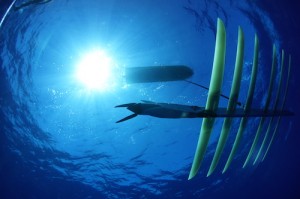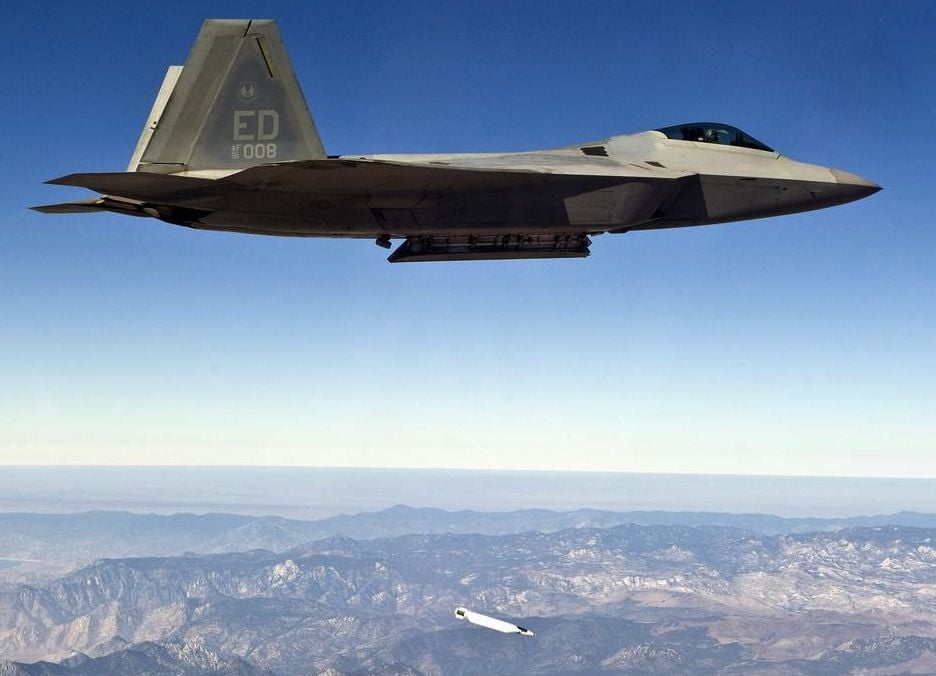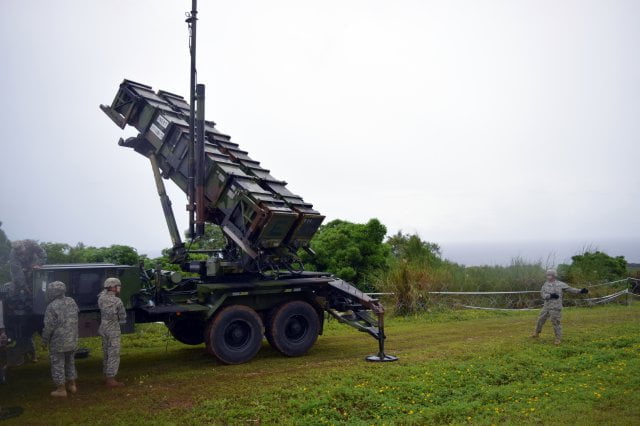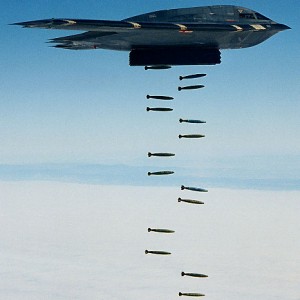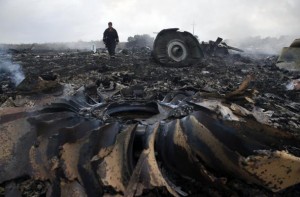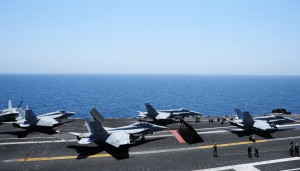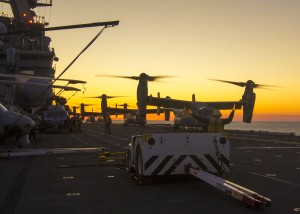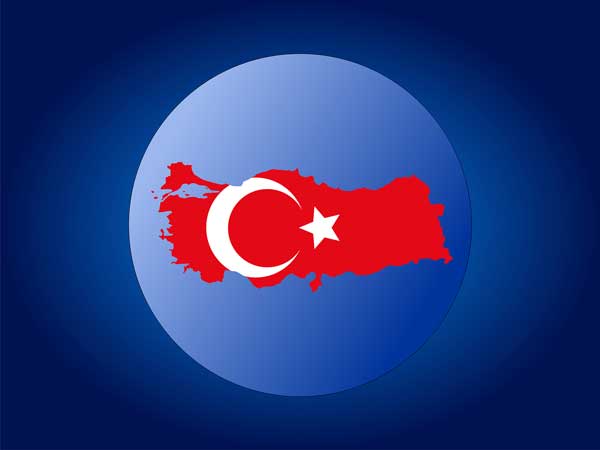2014-09-21 By Gordon Chang
The United States has not had to confront two peer competitors since the end of the Second World War.
We have not faced a united China and Russia since the last days of the 1950s. Today, however, Beijing and Moscow, standing together, challenge us.
Vladimir Putin and Xi Jinping refer to the “uniqueness of China-Russia relations.”
Their ties, as both now perceive them, are truly one-of-a-kind. They view themselves in the same terms; they see their interests converging; they are, in short, like-minded.
As a result, the Russians and the Chinese have embarked on a grand project, challenging the American-led international system. They are grabbing territory from neighbors and taking on America at sea and in the sky.
They are both threatening nuclear war and thinking of waging conflicts they believe will stay limited, even if they use nukes.
Many say they will remain wary of the other and will never form a durable partnership, but even if these propositions prove to be correct, the Dragon and the Bear, acting provocatively at the same time, can nonetheless shake the world and make it worse.
The Russian Dynamic
We begin with the junior partner in this dangerous combination, Russia.
Russia is fundamentally a weak state. Its economy last year underperformed every estimate, growing only 1.3%, well down from 2012’s 3.4%. Growth rates have been falling for three years, signaling structural problems. Consumption is sagging as is manufacturing.
And there is one more negative factor. The mild sanctions imposed on Russia are already causing a major disruption to the economy, with money hemorrhaging out of the country, so far more than $200 billion this year.
No surprise then that the economy is near recession. The official forecast is for 0.5% growth this year, but even that is unlikely. This year, Russia will be lucky to stay above zero.
Russia sustains itself by selling oil and gas, but thanks to the fracking revolution in the good ole USA, we, not the Russians, are the world’s top energy producer and energy prices should, absent geopolitical turmoil, trend lower.
Vladimir Putin may have outsized ambitions, but he does not have the means, at least over the long run, to implement them.
Yet as we know, he can invade his neighbors and remain a disruptive force in the short run because he has the will to exert Russian power.
That’s why he came in at No. 1 in the most recent Forbes ranking of the most powerful figures in the world.
But to make matters worse, it almost does not matter that Russia is fundamentally a weak state.
The China Dynamic
Putin, after all, has another regime behind him. The People’s Republic of China backs his troublesome ambitions, giving the Russian leader the strength to do at least some of what he wants.
According to the global narrative, Beijing is the owner of the 21st century. It is only a matter of time before China has the largest economy in the world. Analysts used to talk about the Chinese overtaking us in the 2030s or at the end of the 2020s. Now, however, the date is two years away according to some.
A fast-expanding economy, according to this storyline, will allow China’s leaders to achieve their ambitions. So many Americans and others think the West and the rest of the world must either accede to Beijing’s wishes or at least accommodate the Chinese.
I disagree. In reality, China has a sluggish economy, growing at about 2%.
The country looks to be on the edge of a debt crisis and property meltdown.
China’s technocrats are postponing a reckoning. They are preventing the inevitable correction with massive amounts of stimulus, but now stimulus is not working well, so the economy is slowing.Because they are preventing the economy from adjusting, the underlying imbalances have become too large to unwind without a crash. We are almost at that critical point when the Chinese economy goes into freefall.
At the same time, China’s political system is showing signs of distress, torn by infighting at the top of the Communist Party. At a June 26 meeting of the Politburo, Xi Jinping talked about how his signature initiative—his anti-corruption campaign, which is really nothing more than an old-fashioned political purge—was stalemated. Then, in melodramatic fashion he talked about his own death.
Given all the coup rumors in the last three years—including some of very recent vintage—maybe he was being serious.
But in any event, while Xi struggles to consolidate control, flag officers are gaining political influence, becoming powerbrokers in the Communist Party’s faction-ridden system. They may not make policy on their own, but they are undoubtedly gaining latitude to do what they want nonetheless.
And we can see that senior officers of the People’s Liberation Army are squaring off against each other. There have been the purges of generals and the series of public loyalty oaths made to Xi this year, a sure sign that China’s supremo knows that not all flags are loyal.
Chinese leaders would never admit this, but I think they know they are playing a weak hand.
And that’s why they are, at this moment, lashing out, taking on many nations—including us—at the same time. That makes no strategic sense, but it is an understandable tactic for desperate leaders.
Fragility and Global Disruption
So Russia and China are fragile.
Does this mean we don’t have to worry about them? No. It means we have to worry about them more.
In decline, Russia and China are finding the alliance that has long eluded them.
Last decade, when both nations looked hardy, it appeared as if the “strategic partnership” they talked about was mostly a mirage. Then, China and Russia thought they did not need each other. Moreover, in both capitals, there were thinkers who perceived the other to be the “ultimate strategic threat in the long-term.”
Putin, on his way to establishing the Russian Federation as a major power, made it clear there was little room for the Chinese at the heart of the global order as he conceived it. After all, in late 2011 he proposed the “Eurasian Union,” a grouping of nations once comprising the Soviet Union. He spoke of it as only “one of the poles of the modern world,” but in reality he saw it as closer to the center of the international system, “serving as an efficient link between Europe and the dynamic Asia-Pacific region.”
China, in effect, would be merely one part of one end of the world, at least as Putin imagined it.
High prices for Russia’s hydrocarbons gave its willful leader the resources to pursue his great ambitions, and the resulting geopolitical competition with China essentially ensured that relations with Beijing remained troubled. Not only did the two countries intensify their rivalry in Central Asia and the Middle East, they faced off on Russian territory, in Moscow’s Far East, the most fundamental irritant in Sino-Russian relations.
Moscow’s deep-seated insecurity over the border with China is why the tie-up between
Russia’s state-owned Rosneft with China National Petroleum Corporation, reached last October, was truly the “breakthrough” dealit was announced to be. Putin, after years of intransigence, broke down and agreed to Beijing’s demand for an equity stake in a lucrative oil field in Eastern Siberia. It was not the first time that Russia had agreed to give the Chinese an ownership interest in an energy field—that occurred in 2006—but it was by far the most significant. The Rosneft-CNPC arrangement, in all probability, will accelerate China’s penetration of the sparsely settled Far East and perhaps give Beijing a platform to reach into the Russian heartland itself.
Why the Russian change of heart?
The Wall Street Journal reported that the arrangement was “a sign that Moscow is overcoming its fear of Chinese encroachment on Russia’s Far East.” That could be true, but it’s more likely the Kremlin saw it had no alternative but to give the Chinese what they wanted. In short, the Rosneft-CNPC oil contract and the subsequent Gazprom-CNPC gas deal signal a turning point in which Beijing has gained, now and for the foreseeable future, the upper hand.
Russia realizes it has to work with China.
Significantly, Moscow and Beijing, at the time of the announcement of the Rosneft deal in October, agreed to greater diplomatic coordination, best symbolized by the signing of 21 cooperation agreements.
At the same time, the Chinese, for their part, will value the Russians more as time progresses.
A China that finds it hard to form alliances nonetheless realizes it needs friends. President Obama’s critics may see his “pivot” to Asia as “unresourced” and “hollow,” but for the Chinese it is real and an unmistakable warning that Washington is beginning to re-assess overly generous China policies.
In the Russian strongman, Beijing’s policymakers see not only someone who shares their general outlook and a fighter willing to take on Washington, but also a pliable junior partner.Beijing can see that Putin no longer keeps them at arm’s-length. In the last couple years, the Russian leader has adopted a far more conciliatory attitude. As he said in April 2012 about Beijing, “We do not have a single irritating element in our ties.” It appears that Chinese leaders are beginning to believe they can, when it counts, control Putin.
We may think China should seek to fortify its relations with us and not a sinking Russia, but that is not in fact how Chinese leaders see the world or calculate their interests.
And we should not forget that they are choosing Russia over America because their internal politics are inhibiting better relations with us. There is a strain of anti-Americanism in current Chinese Communist political thought, unmistakably evident in the pages of People’s Daily, the Communist Party’s flagship publication, and in the writings of senior officers of the People’s Liberation Army.
As nationalism replaces prosperity as the Party’s primary basis of legitimacy, it becomes increasingly difficult for its leaders to embrace their counterparts in either the liberal democracies or the many neighbors with which China has territorial disputes. Beijing maintains expansive land and sea claims against an arc of nations from India in the south to South Korea in the north.
Furthermore, its ambitions to close off the international waters of the South China Sea bring it into conflict with seafaring nations, especially the U.S., which has for more than two centuries protected freedom of navigation.
On the other hand, there is virtually no strand of anti-Russian political thought in Beijing. With Xi Jinping’s public campaigns promoting both Marxism and Maoism, the fashion is to lament the passing of the Soviet Union and express pity for a Russia that has, in the view of the Chinese elite, fallen from superpower status to a power of second- or third-rank.
Shaping Cooperation
With America essentially identified as China’s geopolitical opponent, it is only natural that Beijing’s recent foreign policy initiatives show increasing coordination with the Kremlin.
On Syria, for instance, the pair cooperated on four vetoes of Security Council resolutions.
They are also working together to protect the theocratic Iranian regime, a sign that in the
Middle East and Persian Gulf the pair is moving from competition to cooperation.
In Central Asia, Moscow and Beijing are still engaged in their version of the Great Game, but that rivalry is increasingly taking place within the confines of the Beijing-launched Shanghai Cooperation Organization, which the Chinese see as their own NATO or, more to the point, as their own anti-NATO.
Moreover, it is in East Asia where Beijing and Moscow are beginning to cement their loose alliance. Last October, Xi Jinping asked Moscow, in the words of the official Xinhua News Agency, to help China “guarantee security and stability in the Asia-Pacific region.”
At a time when Russia is in obvious long-term decline, the invitation to play a broader role is significant. Xi’s overture, even if insincere, is noteworthy because Beijing has almost never asked others to cooperate in such a way. If nothing else, it reveals that China sees Moscow as “the ideal candidate” to be its “global partner.”
As a sign of partnership, Russia is helping China build an air force significantly larger than the one the Pentagon foresees. The 2014 Pentagon report on China noted that country is pursuing “unprecedented” modernization. It mentioned that 600 of China’s combat aircraft are “modern.”
Not everyone agrees with the estimate of 600. Jane’s ran an article putting the current number of Chinese 4th generation aircraft at 946.
By 2020, you will face 1,562 of them, according to analyst Rick Fisher, who has a far better track record than the Pentagon when it comes to matters Chinese. Included in Fisher’s 2020 figure are 24 Su-35s.
And soon China will have the S-400 air-defense system.
Russia appears set to begin a whole new round of weapons sales to China, something apparently agreed at the time of the Rosneft-CNPC deal. China, according to what some believe are secret side agreements made then, will not only get the good stuff, it will get the rights to manufacture it at home.
This suggests to me that ending the production of the F-22 was a mistake of the first order. We are headed to an era where we have to assume that, at least in the first days of Asia’s next conflict, Russia and China if acting together will control the skies.
To many people, region-wide conflict seems unlikely, impossible even.
But as Enoch Powell remarked, “History is littered with wars which everybody knew would never happen.”
But we don’t need to rely on left-wing British politicians for geopolitical advice. A year ago, who in this room thought that, in just the space of months, Russian tanks would cross a national border; Moscow would annex the territory of a neighbor; and Russian allies, using Moscow’s missiles, would shoot down a civilian jetliner.
And who here would have thought that Putin would publicly threaten to use nuclear weapons to hold onto his conquests, as he did at the end of last month, on August 29?
We have to view these words in the context of his promise on August 14 to unveil what he called offensive nukes; Moscow’s clear violation of the Intermediate-Range Nuclear Forces Treaty, a cornerstone of the Post-Cold War peace; the large-scale Russian strategic nuclear exercises this month; and Russian long-range bombers practicing cruise missile attacks on the U.S. a few weeks ago.
At this moment, some of the worst trends of 1914 and 1939 Europe and 1937 Asia are evident.
This time, however, the weapons in the hands of aggressors are so much more destructive. And at the same time, the concept of nuclear deterrence, which kept the peace since the Cuban Missile Crisis, is breaking down.
A Russian analyst recently wrote that Putin thinks he can employ a limited nuclear strike on a Baltic capital and get away with it.
And if Putin manages to intimidate the West with his not-so-veiled promises to incinerate Ukraine’s defenders, other aggressors may think they too can employ his threatening tactics. For instance, both North Korea and China have recently talked about unleashing Armageddon.
Perhaps we can ignore the ranting of the Kim regime, but Chinese nuclear threats are particularly worrisome.
China’s flag officers have, for two decades, been issuing belligerent warnings about Beijing’s willingness to use nukes to seize Japan’s outlying islands and Taiwan. And in August 2011 a retired Chinese general, still working for Beijing, inadvertently blurted out that his country was planning surprise missile attacks on the U.S.
Chinese threats took on an especially belligerent tone last October.
With no apparent provocation, the main outlets of Chinese state media—People’s Daily, China Central Television, and PLA Daily, among others—ran identical articles about how Chinese submarines launching ballistic missiles tipped with nuclear warheads could kill tens of millions of Americans in Seattle, San Francisco, Los Angeles, San Diego, Boston, New York, Philadelphia, Baltimore, Portland in Maine, and the Navy towns of Annapolis and Norfolk. Those Chinese reports also talked about radiation deaths in Chicago.
Let me point out that these articles were not the work of rogue journalists. They were splashed across state media at the same time, a clear indication they were directed from the top of the Chinese political system, the Politburo Standing Committee.
A nuclear exchange is, at least for most people, inconceivable. For more than a generation, nukes were thought to be defensive in nature, instruments of deterrence.
Today, they look like just another appliance of aggression.
Today, two men, Vladimir Putin of Russia and Xi Jinping of China, are makers of history, with grand ambitions and the will to pursue them.
These ambitious figures are now disturbing peace and tranquility, one in Asia and the other in Europe. American policymakers are loath to call this a new Cold War, but this we can say: Russia and China are now acting at the same time, challenging us, making this moment especially consequential.
So if we want to continue living in a world that is free, we will have to defend it against them.
They are the New Axis.
History, from time to time, picks men and women to fight for all that is good. Due to the challenge from Russia and China, we are at one of those moments.
Editor’s Note: Gordon Chang made this presentation at the US Air Force Association at their 2014 Air & Space Conference and Technology Exposition held at the Gaylord National Resort & Convention Center in National Harbor, Maryland on September 16, 2014.
It is republished with the permission of Gordon Chang and AFA.


